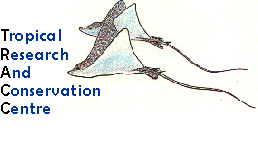|
|
|
|
Effects of blast fishing on coral reef structure
|
 |
|
|
|
|
REEF STRUCTURE
This diagram shows the effects of blast fishing on reef slopes. Fish concentrate at the top of the reef slope so fishermen also concentrate their bomb fishing at the top of the reef slope. The blast causes an avalanche of coral and rubble which covers, smothers or destroys the corals further down the slope. Over 110 kilometers of reef were visually surveyed and over 105 of these had very serious destruction of the coral reefs.
|
||||
|
|
The blasts change the 3 dimensional structure of a reef and the blasted areas no longer function to provide food or shelter to the reef inhabitants. Once the reef structure has been weakened or destroyed by blast fishing, it is much more susceptible to wave action and the reef is unable to maintain it's role as a protector of coastlines. For example, Kapali, a large uninhabited coral cay off southeast Sabah has been heavily blasted; the reef crest is almost functionally non- existent and the reef slopes are completely destroyed. As a result the sand cay is subject to increased wave action, sediment movement patterns have changed and the island has been rapidly eroded. |
|BLAST FISHING| |BLAST FISHING FREQUENCY| |ECONOMICS| |BLAST FISHING REGULATIONS| |EFFECTS ON BIODIVERSITY|
|EFFECTS ON CORAL REEFS| |ECOTOURISM PROTECTION|

![]()